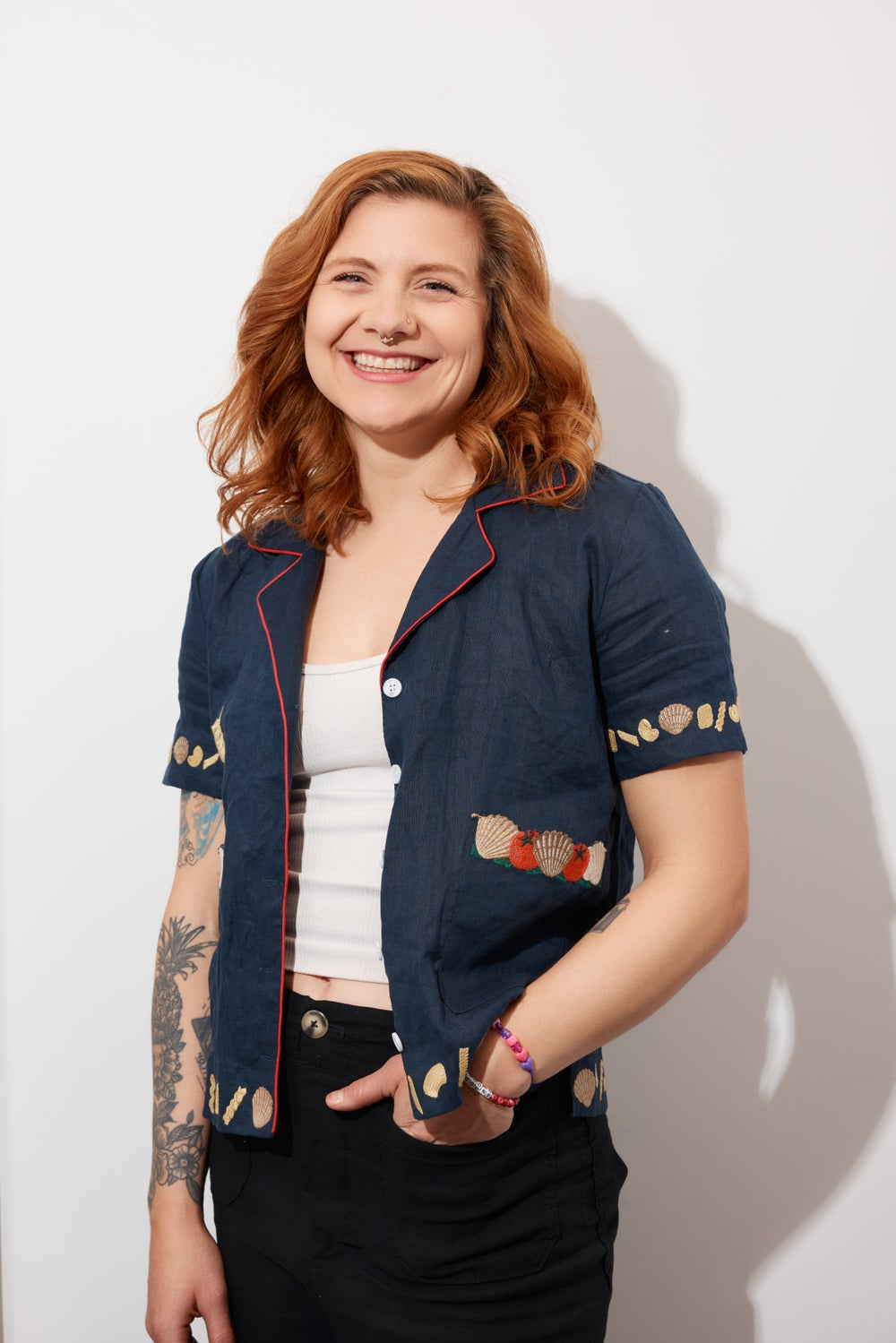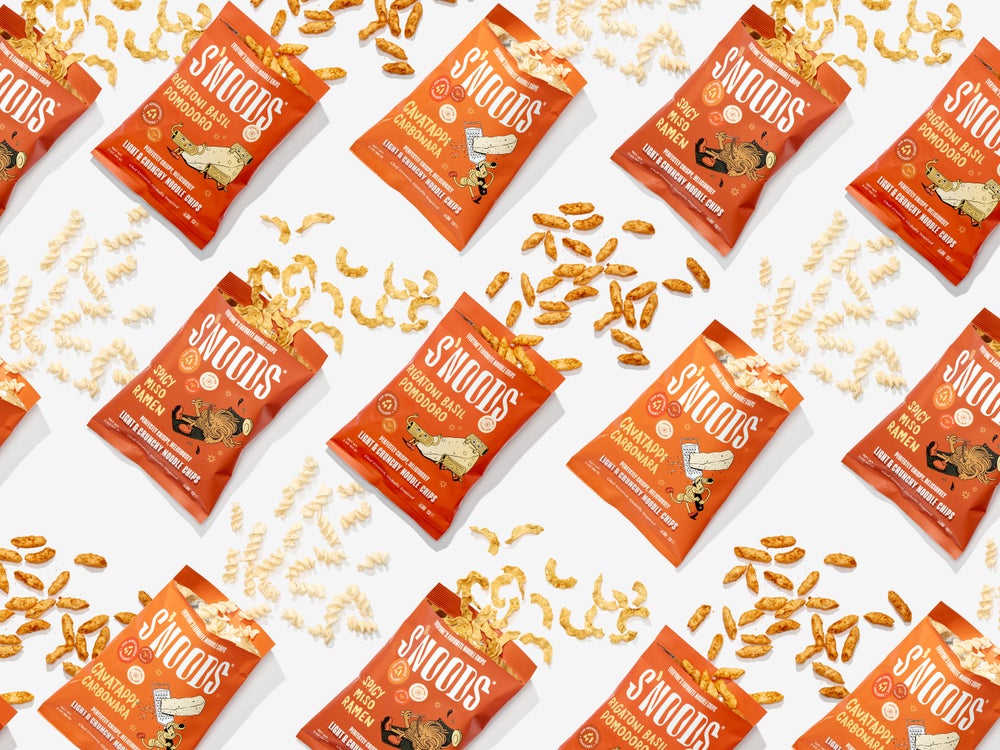Her Private Chef Side Hustle Might Earn Tens of Thousands and 'Seem Glamorous' — But It's Not for the Faint of Heart. Here's an Inside Look. Lauryn Bodden, founder of noodle chip brand S'NOODS, took her culinary skills abroad — discovering new flavors along the way.
By Amanda Breen Edited by Jessica Thomas
Key Takeaways
- Bodden was ready for a change even though the job at sea was "out of [her] comfort zone."
- She worked seven charters her first year and made about $30,000 but averages an annual boost of $18,000-$20,000.
This Side Hustle Spotlight Q&A features Lauryn Bodden, founder of globally inspired noodle chip brand S'NOODS. Bodden has a side hustle working as a private chef with Sailing Collective. Responses have been edited for length and clarity.
 Image Credit: Nick Kova. S'NOODS founder Lauryn Bodden.
Image Credit: Nick Kova. S'NOODS founder Lauryn Bodden.
You run your CPG business, S'NOODS, in New York City. What inspired you to create this product and become an entrepreneur in the food space?
I've worked so many avenues in the hospitality industry, and I always felt like I couldn't find something that fully clicked. Now, it feels like I can take advantage of all these experiences. While I was a food editor at digital publication The Spruce Eats, I applied to be a judge on a Netflix cooking competition show (because it was the pandemic and why not?). Born from my victory on the Snack vs. Chef debut season, S'NOODS, the first chef-driven, globally-inspired noodle chip brand, launched in February 2024. Drawing from my background as a chef, recipe developer and media consultant, I wanted to bring flavors to the snack aisle that aren't driven by SEO. I want to showcase the cuisines I've learned as a restaurant line cook and the cultures I've explored around the world — all in an accessible way, like snacks.
How did you come across this side hustle, and what attracted you to it?
A few years ago, I connected with one of Sailing Collective's captains when I brought homemade snacks onto one of her Key West snorkeling charters during a family trip. I was a recipe developer and culinary producer then but didn't consider myself a chef since I didn't run my own kitchen. However, much like the storyline of Eat Pray Love, I went through a terrible break-up soon afterward and needed some redirection to discover myself. This job and the entire experience were out of my comfort zone, but I wanted to use it to push myself on all fronts (as a chef, business owner and individual). It gave me the escape from New York City that I craved and the means to travel continents I had never seen, especially solo.
Where has the work allowed you to travel?
My first year, I worked seven charters, which is on the higher end for our cohort of chefs. I sailed Antigua, Sardinia/Corsica, the Ionian Islands in Greece, the Dalmatia Coast of Croatia, the Zadar Archipelago and the British Virgin Islands. Summer is the best time of year to do charters as it is peak Mediterranean season, so I aim to do a few months of charters around then and then fill in some off-weeks where I can take personal trips to new places. I'll sprinkle in a few more one-off trips in the fall and/or spring to round out my year with charters.
What kinds of boats are you working on?
We typically sail 42- to 55-foot catamarans with an average of six to 12 guests.
How much money does the side hustle bring in?
I made about $30,000 my first year, but I average about an $18,000-$20,000 annual boost each year. My side hustle feeds my mental health. It allows me to cover the remainder of my monthly expenses like rent while giving me the means to take a quick vacation from S'NOODS or even be the mental reset I need from S'NOODS. It has been a side hustle that's allowed me to product test every stage of S'NOODS, explore new flavor profiles for future product lines and consult chef friends from those regions as I've been able to build my global network.
 Image Credit: Courtesy of S'NOODS
Image Credit: Courtesy of S'NOODS
What are some of your favorite things about sailing as a private chef?
Unlike Below Deck (which everyone imagines when they hear what I do), these charters are just one captain and one chef, so I also fill the roles of stew and deckhand. I learned the major boat knots for tying off lines and securing us to the dock. I learned how to read navigation and put up the sails or drive if needed. My favorite task is swimming a line from the stern of the boat, climbing rocks where we want to anchor and tying it off. To think, I knew nothing about boats three years ago.
What are some of the biggest challenges associated with this side hustle, and how do you navigate them?
While being a private chef might seem glamorous, I have to navigate many unexpected physical, mental and emotional challenges. I have to be on 24/7, so it goes far beyond making delicious food. It's made me extremely patient, flexible and quick-thinking. I discovered this about myself when I filmed Snack vs. Chef, but I grew even stronger in this role. And it has helped me persevere through many challenges with S'NOODS.
A big example of this is the provisioning day right after I arrive (and the day the guests arrive). I need to shop for all of the groceries for an entire week onboard, and often, it's a place I've never seen before, and I don't know the language. My goal is to ensure we don't waste food, so I budget and am smart about what we buy, as there's very little storage on the boats. I have to adapt each meal to the guests' dietary preferences and cravings while also dealing with the weather conditions and unexpected hiccups like running out of propane to cook. Of course, finding time to keep my S'NOODS business running when I have downtime is the biggest challenge. I want to take advantage of soaking in the amazing culture and cuisine as these trips can inspire the next flavor of S'NOODS.

What's your advice for other founders who want to balance running their primary businesses with side hustles?
Figure out why you're doing it. If it's to fuel a portion of your income, figure out what that amount is and make sure you're hitting that goal. No matter if that portion is big or small. Having a side hustle on top of running a company, especially if you're a solo founder like myself, is hard on its own. Adding more stress and time restraints to your plate will only take away from the mental fortitude you need to make your startup successful. Plus, there has to be some joy in both/either, or you just won't make the strides you hope for.












